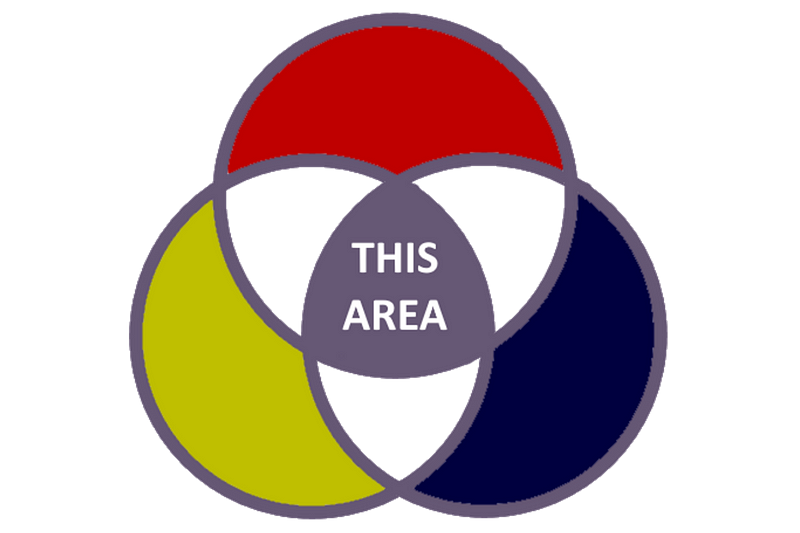Inclusivity: What It Is and How to Avoid It
Thought leaders bleat the importance of inclusivity today, particularly if it results in publicity.

Do these leaders mean what they say? Do they understand what they say? Or is inclusivity a non-concept intended to obscure a deeper issue?

I wrote previously that society is not an abstract concept, that we are society, and that we are empowered to change social views by changing our own. But how do these ideas move outside us and influence others? The answer lies in inclusivity.
Unfortunately, the word “inclusivity” has become a political buzzword. Some groups want to be (or at least appear to be) inclusive; other groups want to mock the idea without understanding why. Our thought leaders tell us being inclusive results in a better society for us all. But what does that mean? What is different about an inclusive society? Why is an inclusive society better than not being inclusive?
A minor communication problem
The primary problem with society and politics is one of communication. We are not taught that communication is a critical skill, and its lack is exacerbated by social media. While there are valuable aspects to social media, its prime function is to tell a story, not to engage others in the story.
Hollywood has demonstrated that people love a feel-good story. The Average Joe likes / hates Beautiful Jane, but Jane hates / loves Joe. Then Joe endures a few pratfalls, a social faux pas causes Jane to roll her eyes, and hilarity ensues. The story reaches a crescendo with a breathless smooch as Jane and Joe realize they are perfect for each other, now and forever. A wacky callback to an early pratfall cues credits to roll.
Despite Hollywood’s success, people are far less interested in hearing a real Average Joe tell his story. That is, unless Joe’s story acts as an opportunity to tell their own directly after. The original story is now diminished — there may have been a point to be made, and it is lost. Unfortunately, most of the time, hijacking another story is unconscious — people sincerely do not realize there are other stories to be told.
A bad example of inclusivity
Because many people tend not to consider other stories except as a launching pad for their own, I present a whimsical, contrived example of how not to be inclusive. Imagine a conversation similar to the following:
Person A: I like bananas!
Person B: I like mangoes!
Person C: I like coconuts!
Has this conversation been inclusive? It seems so — after all, three different fruits were discussed. The discussion seems very fruit-inclusive. (Wait, is coconut a fruit? Meh, I’ll figure it out later.) Further, at the end of the conversation, participants can look around, feel that their story has been told, and relax into a “Well, that was nice” kind of sensation.
A better example of inclusivity
Was the conversation above inclusive? Or was it simply a vehicle for solipsistic behavior? What makes an inclusive discussion is slightly different. Instead of including everybody to tell an individual story, inclusivity hinges on including everybody’s story in a greater story. I present an even more contrived example:
Person A: I like bananas!
Person B: I like mangoes!
Person C: I like coconuts!
Inclusive Person: Wow, I see fruit (and coconuts) can be great food. Pineapple is one of my favorites. And isn’t this interesting? I notice all the fruits (and coconuts) are tropical. I wonder what it is about tropical fruit (and coconuts) that appeals to us?
Wordy? Sure. Heavy-handed? Maybe. Inclusive? Absolutely. All four people are now joined in a common experience. All four people see part of themselves in the others. The group has begun to form an identity. Perhaps tropical fruit (and coconuts) is not a do-or-die platform for a group, but there is, at least, a foundation for its members to continue to explore its identity that did not exist before.
Shared experiences
The key element of inclusivity is not inviting everybody you know to stand in a room while a conversation is going on. The key element of inclusivity is to invite people into the conversation. Just as an individual must explore identity in order to manifest it, a group must explore its identity through the individual participants.
In exploring group identity, a critical factor is recognizing that all answers to the question “who are we?” are correct. That is, each individual contribution to the story the group tells represents an expression of the group. When the group can appreciate, celebrate, and share each individual identity, the shared experience will catalyze the group, leading to people who want to contribute more.
Shared experience is the root of understanding each other. When we see ourselves in other people, we are more willing to work with each other and care for each other. Even one shared experience can transform a group of mere people into a team of colleagues.
Why inclusivity matters
To return to the questions I posed at the beginning, there are good reasons to be inclusive. None of them has to do with making people feel good about themselves or promoting a political agenda. The best reason is that inclusivity fosters an environment where all members are invested in the purpose the group serves.
Does inclusivity matter? Frankly, if you are unconcerned about the level of satisfaction within a team, no. Just be prepared for the group to perform poorly and potentially dissolve.
From the vantage point of all society, inclusivity is vital. Like it or not, we all live on this planet and must share resources. We assume that our countries are unassailable, but without solidarity, they will fail. One must only look to history to confirm that no civilization is permanent.
We, as a society, must recognize that our individual stories have meaning and context only within the greater story of humanity. Until we realize that inclusivity implies including everybody in the story being told, we will struggle with it.




